What is DEIA?
Presented by Dr. Nicholas Lamar Wright
Director of Diversity, Equity, & Inclusion
University of Kentucky Human Development Institute

Learning Objectives
At the end of this lesson, expect to complete a self-reflection activity. Self-reflection is a valuable tool to gain awareness.
Diversity refers to the wide range of human differences that we each have.
Consider the people in the image on the right. We see various races, genders, and other things as well.
Diversity goes beyond what might be visual or apparent to others.
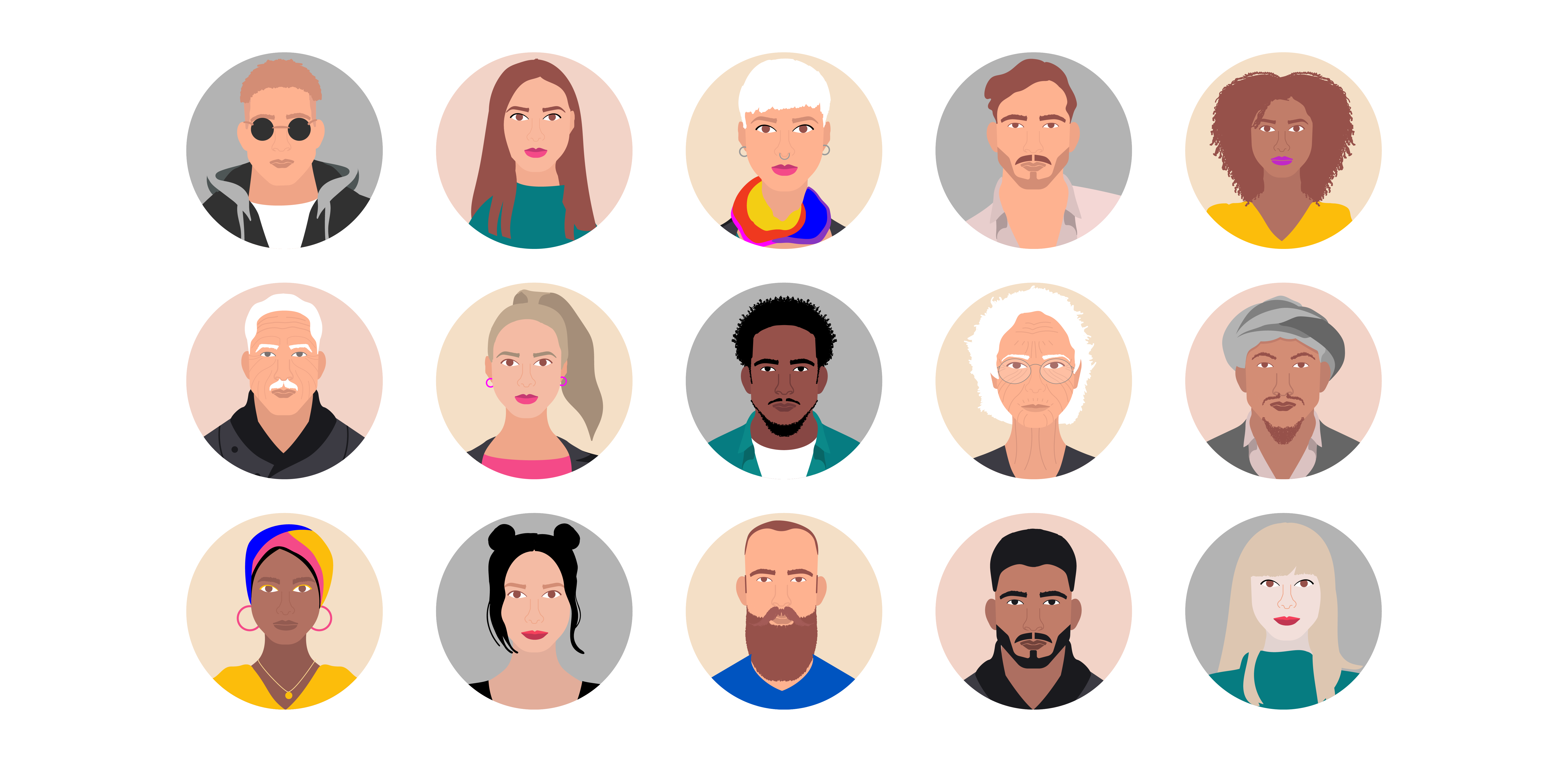
Diversity includes our characteristics, but also our thoughts, experiences, and perspectives. There’s depth in diversity, meaning that individuals can be diverse in multiple ways simultaneously.
Intersectionality is when we have these multiple diversities.
It’s important to recognize and embrace diversity. To ensure people are acknowledged and equal opportunities are promoted. Diversity in our team brings positive impacts, such as increased creativity, innovation, decision-making, and problem-solving skills.
When we have various perspectives represented, we can find a more holistic solution. Diversity is more than just a moral imperative. It’s a strategic advantage that promotes our overall goals and successes. When we use the word diversity, there are some of the concepts we are referring to.
What does diversity include?
Diversity includes a wide array of aspects, including
Giving people the resources they need to reach their goals.
Equity seeks to provide equal opportunities for all individuals. Acknowledging that we don’t all start from the same place and that we have a range of abilities.
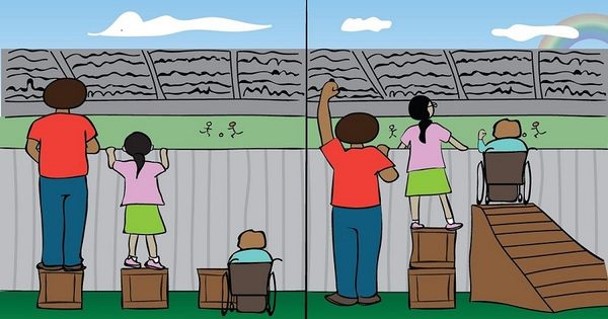
Consider this image. Let’s start with the far left image. The person on the left is tall, the person in the middle is short, and the person on the far side is a wheelchair user. Each of these three people is given the same size box to watch a game. Who can see best? Who cannot see?
This is a good image to represent equality. Everyone received the same resource, and is expected to achieve the same exact goal. Unfortunately, this does not work for everyone.
Let’s take a look at part of the image on the right. The person on the left has no box, but can still see over the fence. The person in the middle is given two boxes, and can now see the game. The wheelchair user is given a ramp, which allows them to see the game.
Equitable Mindset
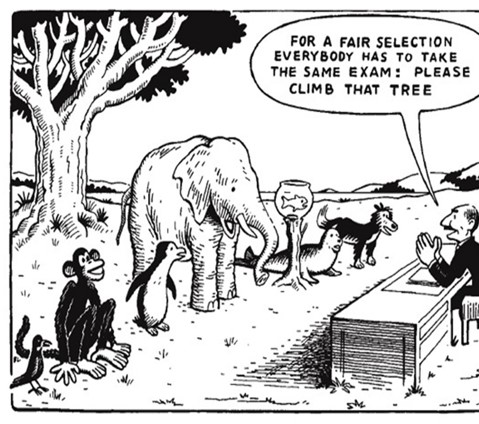
On the screen is an image with a tree, a person behind a desk, and 7 animals. The animals are a bird, a monkey, a penguin, and goldfish, a sill, and a wolf.
Regardless of who we feel will climb the tree the fastest, we can all agree it will not be the goldfish. In this situation, most of us can tell that it’s not fair to judge an animal’s worth based on how well they can climb a tree.
In this circumstance, we acknowledge that this test is not fair. Differences exist, and not everyone starts from the same place, and that bias does exist.
We find it easier to notice this in this humourous image, but more challenging when to notice this in people. We may not be testing people’s worth by their ability to come and ___, but we must always have an equitable mindset. That part, as in fairness, justice. In our next topic, which is inclusively.
In summary, an Equitable Mindset looks like:
Welcoming people of various identities and skill levels to be collaborators.

In this image, we see people of different races, genders, and abilities.
Inclusion is the practice of creating environments for all individuals, and their diverse backgrounds, through welcomed, respected, and valuable inclusion ensures that everyone has equal access to resources, participation, and opportunities.
____ acknowledges and respects diversity by vying differences that contribute to a more dynamic environment. Inclusion is reinforced in our structures, language representation, policies, and actions.
What is the difference between diversity and inclusion?
Diversity
Focus on the makeup of the workforce.
Diversity focuses on the characteristics of the people.
Inclusion
Deliberate acts of welcoming diversity and creating an environment where all people can succeed.
Inclusion does more than diversity, it’s the deliberate act of welcome all of these diverse identities and to create an environment where everyone can succeed.
Inclusion encourages everyone to be their most authentic, genuine selves. When environments are inclusive, people feel engaged, motivated, and empowered. Inclusion promotes creative, resilient communities.
The practice of making information, activities, and environments useable for all people.
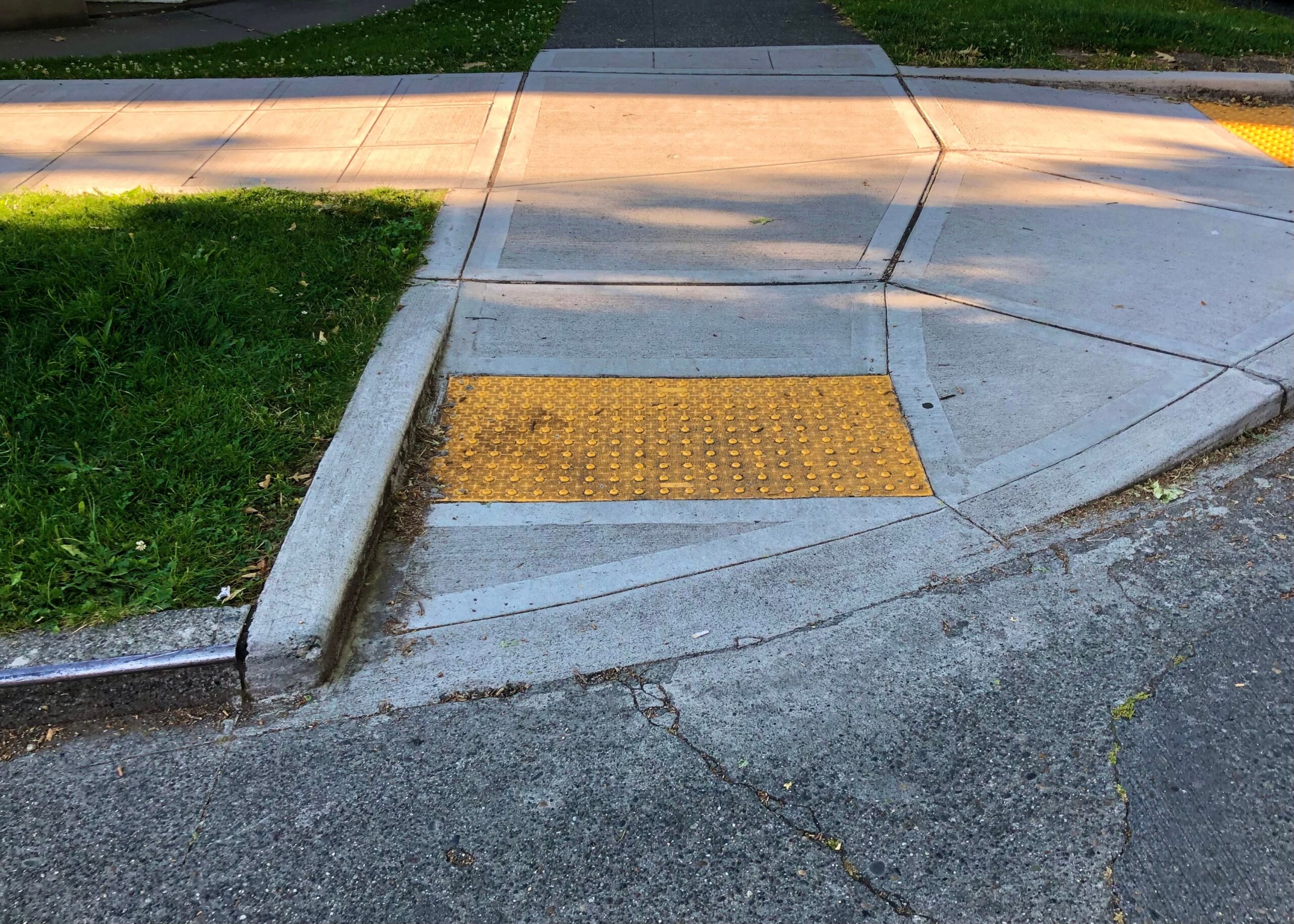
Curb-cut

Ramp
The last concept in DEIA is accessibility. Above, see two accessible structures, one being a curb cut, and the other a ramp. These are examples of accessibility that are not the only to implement accessibility in our environments, technologies, communication, and services to ensure people of a range of abilities can access everything. Accessibility works to eliminate barriers and create inclusive experiences for all people. Disability requires being proactive instead of reactive. and as an ongoing commitment to consider that all people with diverse abilities receive full participation.
This lesson is titled, What is DEIA. Today we’re able to elaborate on what each letter meant, and why this is important. The D is for diversity, the E is for equity, the I for inclusion, and the A is for accessibility. Diversity, equity, inclusion, and accessibility within our environment and our culture.

Having full support in your identity.
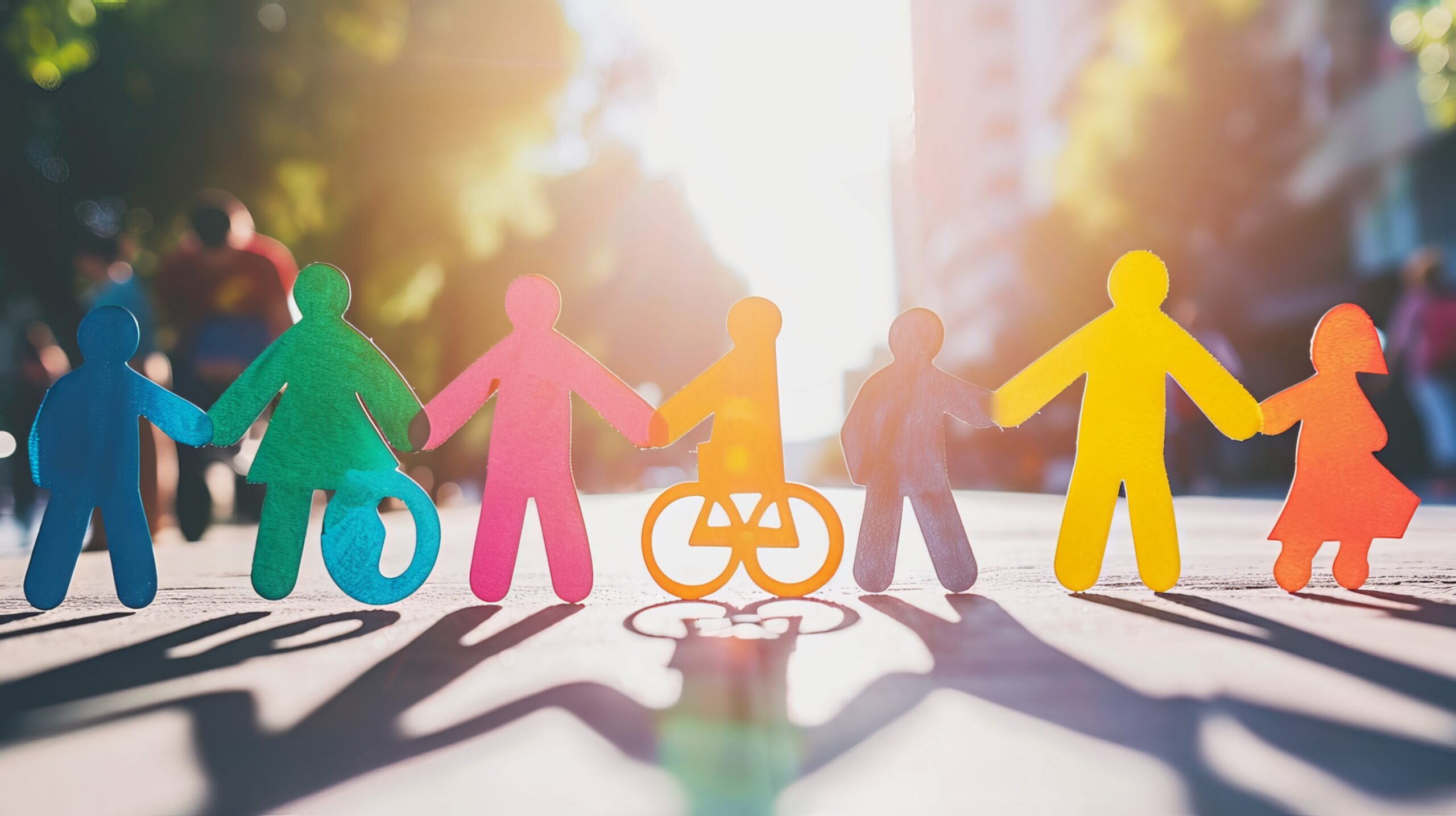
Our friends gathered around the living space. Everyone is talking, listening, and enjoying themselves. Each person has a different chair. But all are enjoying being authentic in this space.
Belonging is being fully accepted and valued at birth, and this motivates our actions. When people feel a sense of belonging, they feel connected, supported, and appreciated by people within their group. This increases their commitment to belonging and enhances everyone’s experience, especially those from marginalized backgrounds place. When we achieve DEIA. And we made the longing. Now we have increased employee, engagement, team collaboration, creativity, overall well-being, and longevity sense of belonging is a strategic investment that supports people both personally and professionally hope that by understanding the concepts today you can confidently answer the question, What is DEIA. And gain a better understanding of the importance of belonging.
Reflection Questions
There are no right or wrong answers, but we encourage you to share your reflection with a coworker, or a friend.
Consider how it made you feel and any impact it had on you emotionally or socially.
Consider your next steps. Write them down as a to-do, or follow up with your supervisor. How can you ensure belonging is part of your
Questions or Concerns
Dr. Nicholas Lamar Wright
Director of Diversity, Equity and Inclusion
University of Kentucky Human Development Institute

